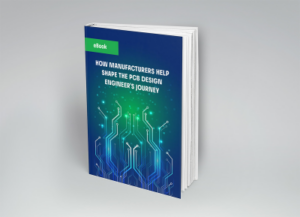
The L7805CV is one member of a series of three terminal voltage regulators. It has a history extending back almost 30 years, and in that time another component, the 𝞵A7805CKCS, has been released as an update. Both of these highly useful components are still in common use and have similar use cases. By leveraging information from the L7805CV datasheet, you can take advantage of the features that have made this regulator an engineer favorite.
L7805CV: Features and Operation
The L7805CV is one of a series of voltage regulators, all of which handle different voltages. Output voltages can range from 5 to 24 V, and the L7805CV is at the lower end of that range, with typical current at 5V. The L7805CV datasheet describes important features of this popular voltage regulator, which are compared with the 𝞵A7805CKCS alternative below.
|
L7805CV vs 𝞵A7805CKCS COMPARISON |
|
|
L7805CV Features |
𝞵A7805CKCS Features |
|
Multiple output voltage options: 5, 6, 8, 8.5, 9, 12, 15, 18, and 24 V |
Fixed output voltage options: 5, 8, 10, 12, 15, and 24 V |
|
1.5A output current |
1.5A output current |
|
Output tolerance of 2% |
High power density |
|
Short circuit protection |
Short circuit protection |
|
Thermal overload protection |
Thermal overload protection |
|
Safe operating area (SOA) protection |
Safe operating area (SOA) protection |
The architecture for both the L7805CV and 𝞵A7805CKCS consists of three prongs, with each serving a different purpose. The outer prongs each handle either input or output, while the center prong functions as a ground.
Current is limited inside the component, so although the L7805CV can take an input of 35 to 40V of DC current, the amount that it outputs is significantly lower. The C variants of the L78* line have lower temperature tolerances than the rest of their group, with a minimum operating temperature of 0 degrees Celsius versus -40 degrees Celsius. All members of the L78* line can operate up to a temperature of 125 degrees Celsius.
The L7805CV and the other members of its line have thermal overload protection and will shut down if too much current passes through them. Adding an amplifier can safely increase the output voltage if necessary, and the minimum increase is 2V. As the output voltage increases through this component, it is important to also add additional short circuit protection, which includes common passive and active components, like appropriately sized resistors and transistors. The L7805CV datasheet also recommends using a capacitor to control any anomalies with current or voltage. In some contexts, an external diode may also be necessary when running high voltages through this component, to ensure proper grounding. Although the L7805CV has thermal shutdown features, it can still take a lot of work to prevent short circuits.
𝞵A7805CKCS: The Updated L7805CV
The 𝞵A7805CKCS is a member of the 𝞵A78* line of voltage regulators, which update the capabilities of the L78* line. Like its predecessor, it outputs 5V, and is structured with input or output prongs on the outside with a ground in the middle. Its thermal overload protection is significantly better than the L7805CV, and it doesn’t require a capacitor to prevent short circuits at higher voltages obtained by amplifiers. The 𝞵A7805CKCS also doesn’t require additional resistors or transistors for stability at higher voltages, thanks to its higher ability for power dissipation and thermal resistance. It runs on a lower voltage range than its predecessor, ranging from 7 to 25V, but can function in the same temperature range and can produce 1.5 A of output current, like the L7805CV.
The 𝞵A7805CKCS can switch itself on and off to regulate its temperature. It can alternate between on and off states without an external switch. Internal transistors help the component regulate its internal current, managing both current flow and total component temperature. Capacitors are recommended for both input and output, but not for the same reasons as the L7805CV. A capacitor on input for the 𝞵A7805CKCS helps filter noise from the input, while a decoupling capacitor on the output can help stabilize the output current and voltage. There are a few instances where additional components can protect the 𝞵A7805CKCS from damage in unusual circumstances. A clamp diode connected to the output can protect the component from polarity reversals, and a diode shunt on the output can protect the 𝞵A7805CKCS from damage caused by overvoltage.

Uses for the L7805CV and 𝞵A7805CKCS
The L78* line and the 𝞵A78* line both have similar uses since they are both a type of voltage regulator. Voltage regulators in general are useful for portable chargers, USB connections, household appliances, and computer systems inside automobiles. The 𝞵A7805CKCS has additional applications in telecommunications and noise elimination within electronics.
Although both components are fixed-voltage regulators, they can obtain adjustable voltages depending on how they interact with other components in a circuit. They can also be used as a power-pass element when building more complex customized voltage regulators. Both components claim to be virtually impervious to overload in their datasheets, but the 𝞵A7805CKCS is better suited for critical projects since it’s less vulnerable to short-circuiting. These critical projects should not include medical applications, which neither component is designed or tested for.
The 𝞵A7805CKCS is safe for use with operational amplifiers and level-shifting circuits, but the L7805CV may not be robust enough for those uses, given its higher chance of overheating. Although the applications for the L7805CV and the 𝞵A7805CKCS overlap, designs that require robust power dissipation and heat control would probably benefit from using the 𝞵A7805CKCS. Since the L7805CV is still extremely common in modern electronics projects, however, it is likely only the most heat-sensitive projects would require the 𝞵A7805CKCS.

PCB Design with the L7805CV Datasheet
When designing with voltage regulators, it is important to follow a good selection criteria to ensure the component meets your functionality and performance objectives. The most reliable information and data resource is the datasheet, as the contents are provided by the part manufacturer.

L7805CV CAD models from UL.
Similarly, you should rely on a trusted industry leader for accurate, manufacturer-vetted CAD models, to achieve the most efficient PCB design with the L7805CV, or its alternative, the 𝞵A7805CKCS.
If you’re looking for CAD models for common components or important information like how to best use the L7805CV datasheet for your design, Ultra Librarian helps by compiling all your sourcing and CAD information in one place.
Working with Ultra Librarian sets up your team for success to ensure streamlined and error-free design, production, and sourcing. Register today for free.










